On 12-13 December the British Library hosted the Royal conference in conjunction with our exhibition, Royal Manuscripts: The Genius of Illumination. Seventeen speakers gathered from the UK, continental Europe and America to shed new light on the Royal collection, and particularly on the manuscripts on display.
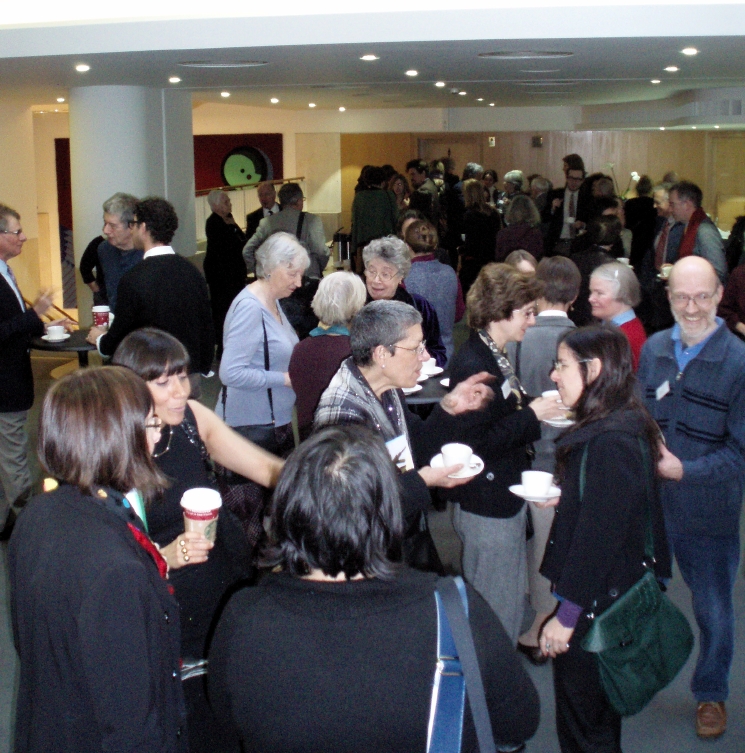
We are delighted with the conference’s success, and the feedback we have received has been overwhelmingly positive. Over 150 people were in attendance for two days of fascinating insights into the Royal manuscripts. Subjects ranged from some of the best known manuscripts in the exhibition—including the Shrewsbury Book (Royal 15 E. vi) and the itinerary of Matthew Paris (Royal 14 C. vii)—to some of the Royal collection’s less familiar treasures, like a humanist book containing hieroglyphic emblems (Royal 12 C. iii) and an (unusually) unillustrated but heavily annotated bestiary (Royal 2 C. xii). The evening talks given by Michael Wood and John Goodall were erudite and entertaining highlights for those attending the conference, as was the exhibition itself.
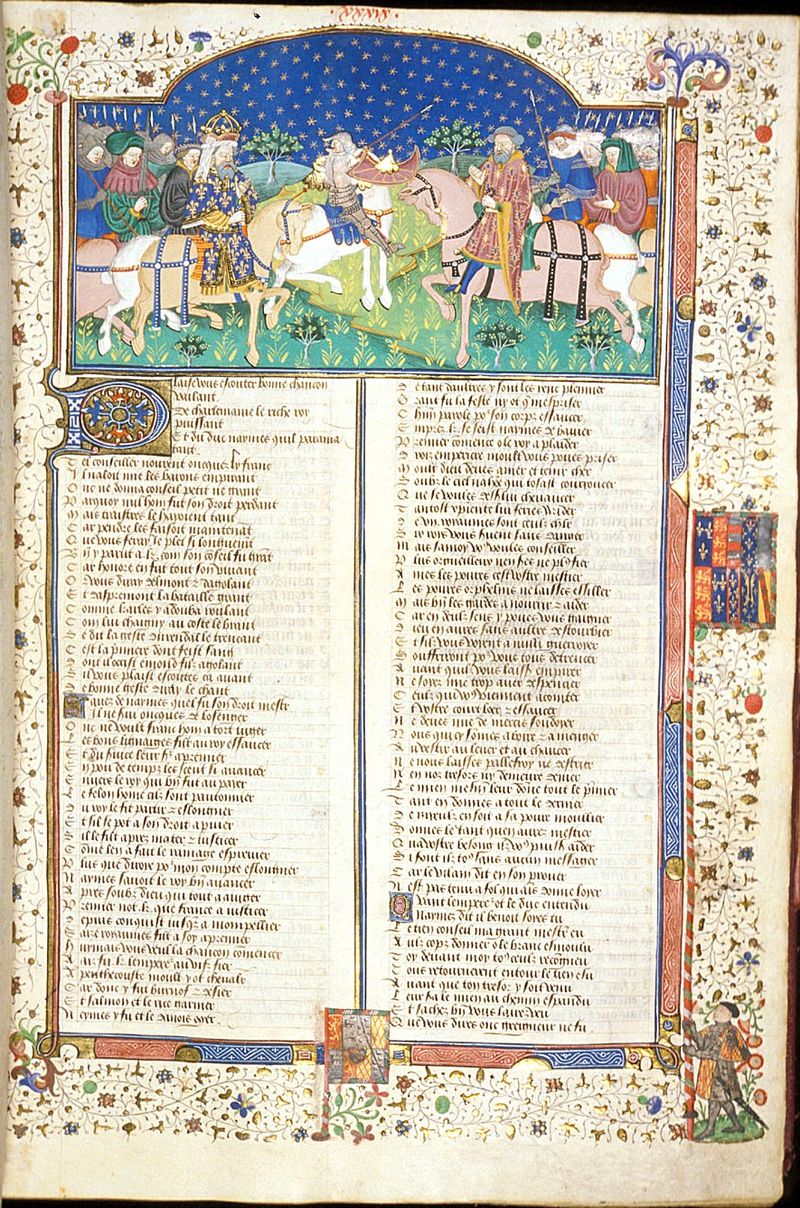 Miniature of Charlemagne and Naymes meeting on horseback, Shrewsbury Book, Royal 15 E. vi, f. 43.
Miniature of Charlemagne and Naymes meeting on horseback, Shrewsbury Book, Royal 15 E. vi, f. 43.
On Monday morning, Professor Anthony Edwards and Professor Matthew Fisher focused on the output and authorial interventions of two respective scribes of Royal manuscripts: the sixteenth-century poet William Forrest, whose poems survive in three Royal manuscripts (Royal 17 A. xxi, Royal 17 D. iii and Royal 18 C. xiii), and the so-called Harley Scribe, who was involved in copying some of the many texts within an intriguing multilingual English book (Royal 12 C. xii). A work of one of medieval England's most famous scribes and authors, Matthew Paris, was the subject of the next paper, by Professor Dorothy Kim. In the second session, Kim and Erin K. Donovan both considered how two vastly different Royal manuscripts, the latter (Royal 15 E. i) destined for Edward IV, visualise the East.
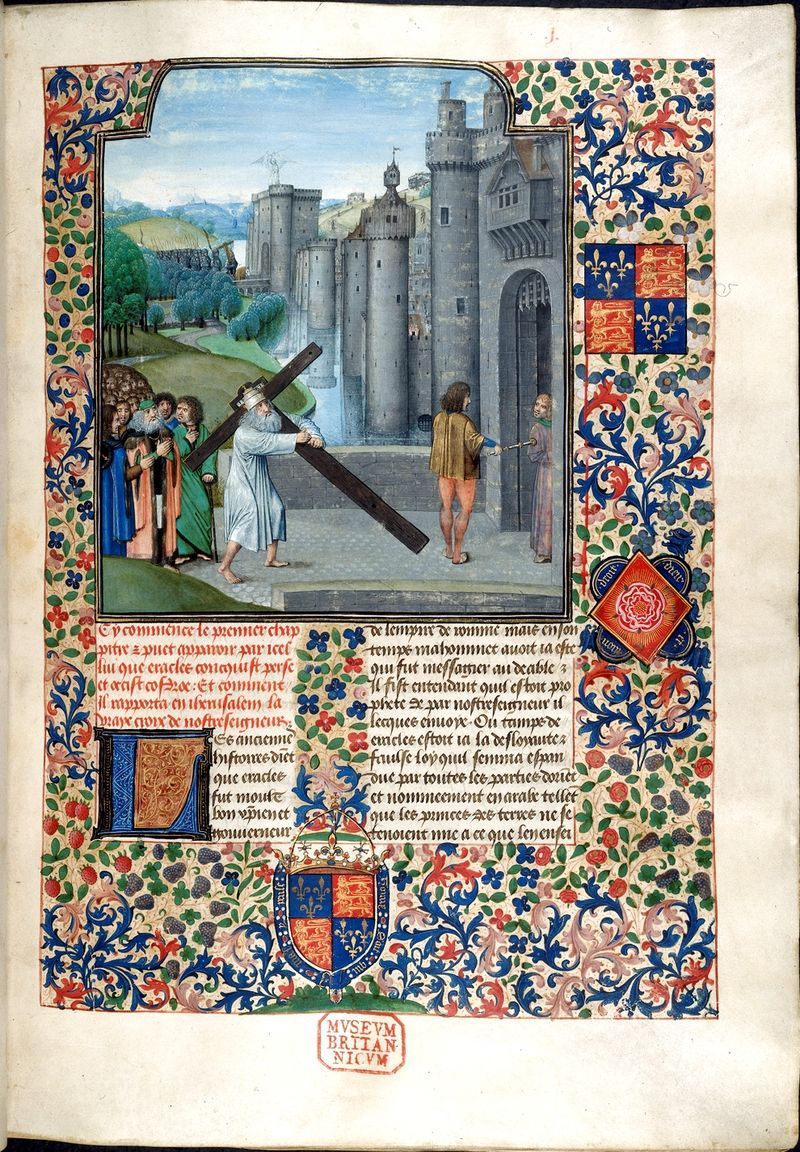 Miniature of emperor Heraclius carrying the True Cross, at a gate of Jerusalem, Livre d'Eracles, Royal 15 E. i, f. 16.
Miniature of emperor Heraclius carrying the True Cross, at a gate of Jerusalem, Livre d'Eracles, Royal 15 E. i, f. 16.
In the afternoon, Dr Alixe Bovey and Dr Olivier de Laborderie examined representations of royalty in the Smithfield Decretals (Royal 10 E. iv) and the two roll chronicles of English kings featured in the exhibition (Royal 14 B. v and Royal 14 B. vi), respectively. The afternoon concluded with a session dedicated to the Shrewsbury book. The speakers—Dr Marigold Norbye, Sara Torres and Jade Bailey—then took part in a lively panel discussion in which they discussed the different angles from which that fascinating manuscript might be explored.
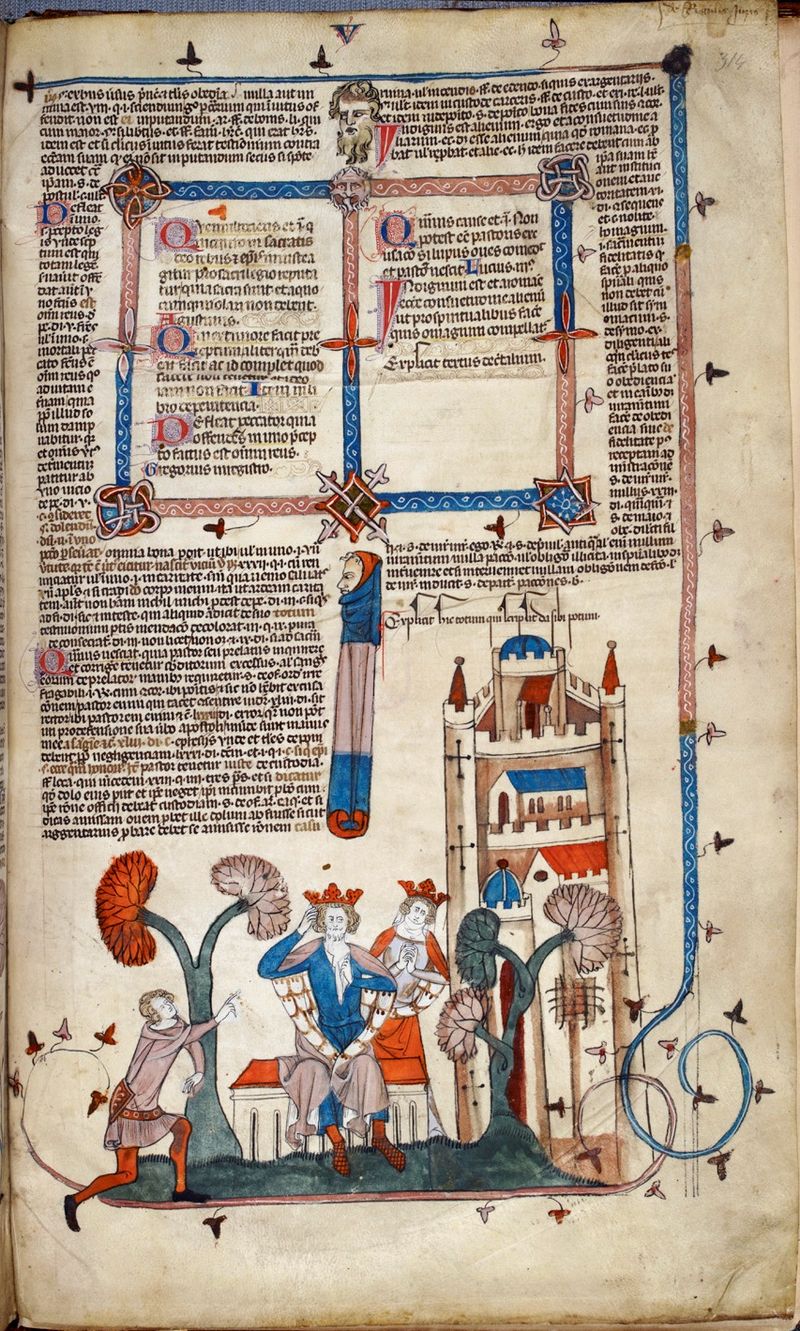 Bas-de-page scene of a messenger approaching a king and queen, Smithfield Decretals, Royal 10 E. iv, f. 314.
Bas-de-page scene of a messenger approaching a king and queen, Smithfield Decretals, Royal 10 E. iv, f. 314.
Tuesday morning's first session was dedicated to the reading of words and images in manuscripts. Dr Maud Pérez-Simon and Professor Anne D. Hedeman each examined a Royal manuscript whose oft-illuminated contents—the Roman d'Alexandre in prose (Royal 20 B. xx) and the Grandes chroniques (Royal 16 G. vi), respectively—are paired with unique and fascinating miniatures. They were followed by Dr Thomas Kren and Lieve de Kesel, whose papers paired manuscripts (including Royal 16 F. ii and Royal 19 C. viii) in a fruitful dialogue uncovering new insights into the style of their production.
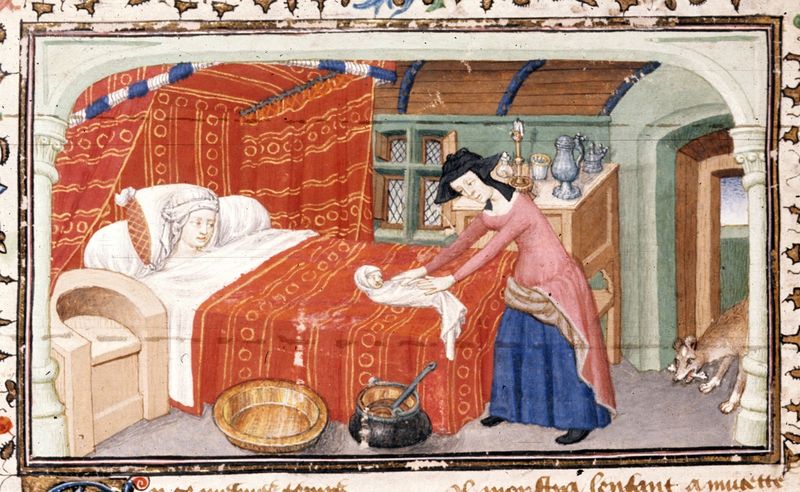 Detail of a miniature of the birth of a monstrous child, La vraye hystoire du bon roy Alixandre, Royal 20 B. xx, f. 86v.
Detail of a miniature of the birth of a monstrous child, La vraye hystoire du bon roy Alixandre, Royal 20 B. xx, f. 86v.
In the afternoon, Dr Ilya Dines and Professor Lucy Freeman Sandler considered how word and image, respectively, shed new light on the readers of two Royal books, the annotated bestiary and the splendid Welles Apocalypse (Royal 15 D. ii). In the final session, Dr Joanna Frońska and Dr Sonja Drimmer gave papers dedicated to two books—a book of astrological treatises and political prophecies (Arundel 66) and the book illustrating and defining hieroglypics—whose somewhat unusual or esoteric contents were intended for a royal audience.
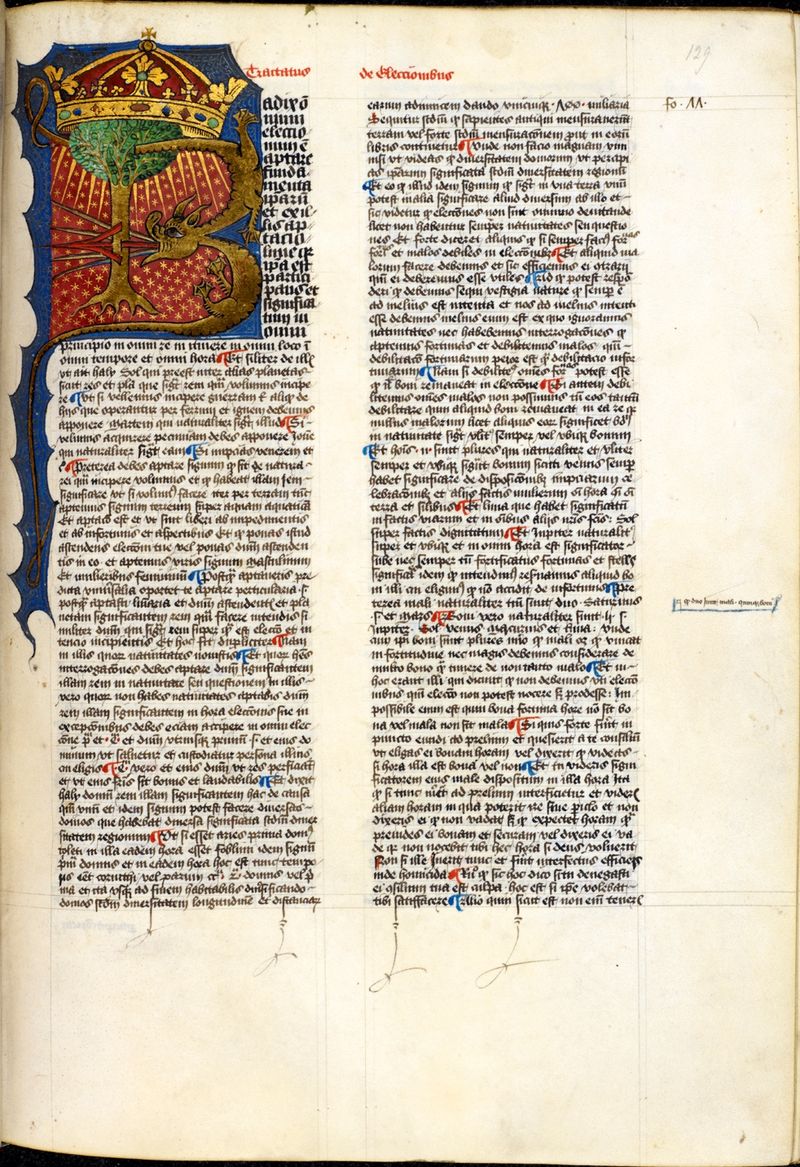 Initial 'R'(adix) formed from a dragon and a crowned tree, Arundel 66, f. 129.
Initial 'R'(adix) formed from a dragon and a crowned tree, Arundel 66, f. 129.
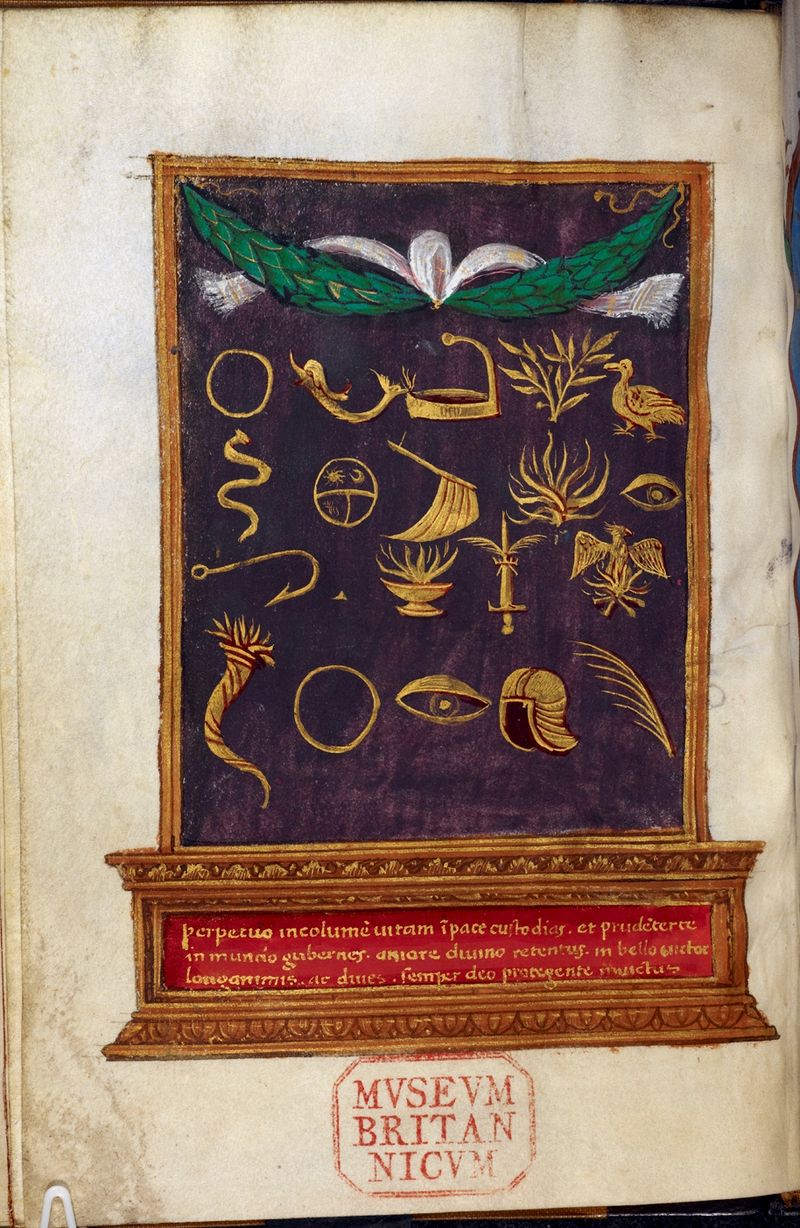 Full-page miniature of a monument-like structure with a purple background, with a series of hieroglyphic emblems, Hieroglyphica, Royal 12 C. iii, f. 19v.
Full-page miniature of a monument-like structure with a purple background, with a series of hieroglyphic emblems, Hieroglyphica, Royal 12 C. iii, f. 19v.
Funding for the exhibition and conference was provided by a grant from the Arts and Humanities Research Council. Student bursaries were generously supported by AMARC.
- Royal project team